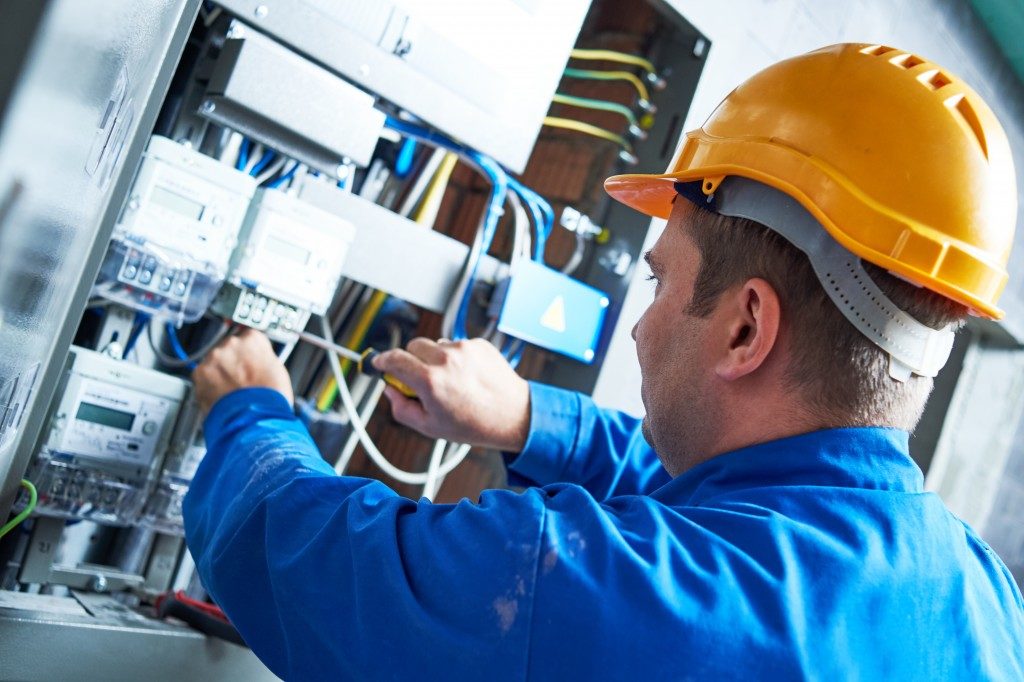- Choose a suitable location with ample parking space, reflective of the products/services you intend to sell.
- Research and analyze competition in the area and create strategies to stand out.
- Design a welcoming storefront with exterior signage displaying the business name and services.
- Create an inviting entryway with ample lighting, seating, and attractive flower boxes.
- Leverage technology to enhance customer experience and gain data insight.
Online shopping has rapidly increased since the last decade and has become the preferred mode for most consumers. However, pandemic restrictions have taught people that physical stores still have a vital role in attracting consumers and providing them with a well-rounded shopping experience.
As a business owner, transitioning from an online to a physical store can be daunting. But proper planning, implementation, and execution can be an immensely gratifying and successful experience. This guide listed several vital recommendations to help your business smoothly and efficiently transition from an online to a physical store.

Location is Key
The first step in setting up a physical store is choosing the right location. The location should be easily accessible to your target audience, with ample parking space and a high footfall area. The rental cost should be within your budget, and the location must reflect the type of products or services you intend to sell. List all potential locations, compare their pros and cons, and choose the best suits your business’s needs.
Research and Analyze Competition
You must also research and analyze the competition in the area. You’ll need to find a way to stand out from them with your unique product offerings or services if similar businesses are already operating within the vicinity. Keeping an eye on competitor activities will help you stay ahead of trends and formulate strategies accordingly.
Design a Welcoming Store Front
Your store’s exterior should attract customers from the outside with a well-designed and attractive storefront. Ensure the exterior signage displays your business name, products, and services. The theme and colors should be consistent with your brand’s message, creating a welcoming atmosphere for visitors.
Suitable Entryway
Ensure that your entryway is warm and inviting, with ample lighting, plenty of space for customers to move around, and positive messaging. Consider adding comfortable seating if you want customers to stay for a while. Add eye-catching features like attractive flower boxes or planters near the entrance to enhance curb appeal and create an inviting atmosphere.
Work with Professionals
If you need to start from scratch, you should also work with reputable commercial builders. Experienced professionals can help you design the perfect storage space that meets your requirements. They can also provide valuable advice on selecting fixtures, furniture, and other essential elements for a successful physical store.
A Well-Organized Layout and Displays
A well-organized store layout and displays make shopping in your store an enjoyable experience for your customers. Plan the layout to promote seamless browsing for your customers. Ensure that products are displayed intuitively and easily, with clear pricing tags and descriptions to help customers make informed purchases. The store must maintain cleanliness and high hygiene standards to gain customers’ trust and ensure repeat visits.
Focal Point
Create a focal point in the store to attract and engage customers; this could be an eye-catching display, special offers, or promotions. Make sure that your products are properly labeled with categories and descriptions. So, it’s easy for customers to find what they need. To help customers make better decisions, consider displaying samples of items such as clothing, furniture, and beauty products.
Lighting
The right lighting can make a big difference in creating a pleasant shopping environment for customers. Ensure that the store is well-lit to allow customers to see items on display as they browse through your store. Invest in energy-efficient LED lights instead of traditional fluorescent bulbs—they last longer and reduce energy costs. You should also consider the aesthetics of your store’s lighting—warm or bright lights can affect customers’ moods and help create a positive shopping atmosphere.

Leverage Technology to Enhance Your Store’s Experience
Incorporating technology is essential in today’s retail industry. Technology such as Point of Sale (POS) systems streamlines purchasing, tracking inventory levels, and maintaining customer data.
Virtual Reality
You can also implement virtual reality to give customers a more engaging and interactive shopping experience. Technology helps to engage customers, enhance their experience, and raise the overall profile of your store.
Customer Data
You can also use technology to track customer data and gain insight into their shopping preferences and behaviors. This information can be used to develop more targeted campaigns, customize experiences, and increase customer loyalty. By leveraging technology in your store, you can provide customers with a unique experience that will keep them returning for more.
The transition from online to a physical store may seem daunting, but it is an achievable and rewarding experience. The right location, design, and layout are the critical requirements for a successful physical store. Additionally, businesses must leverage technology to create a more engaging shopping experience. With the right strategy and execution, companies can attract customers, generate revenue, and establish a strong brand presence.




